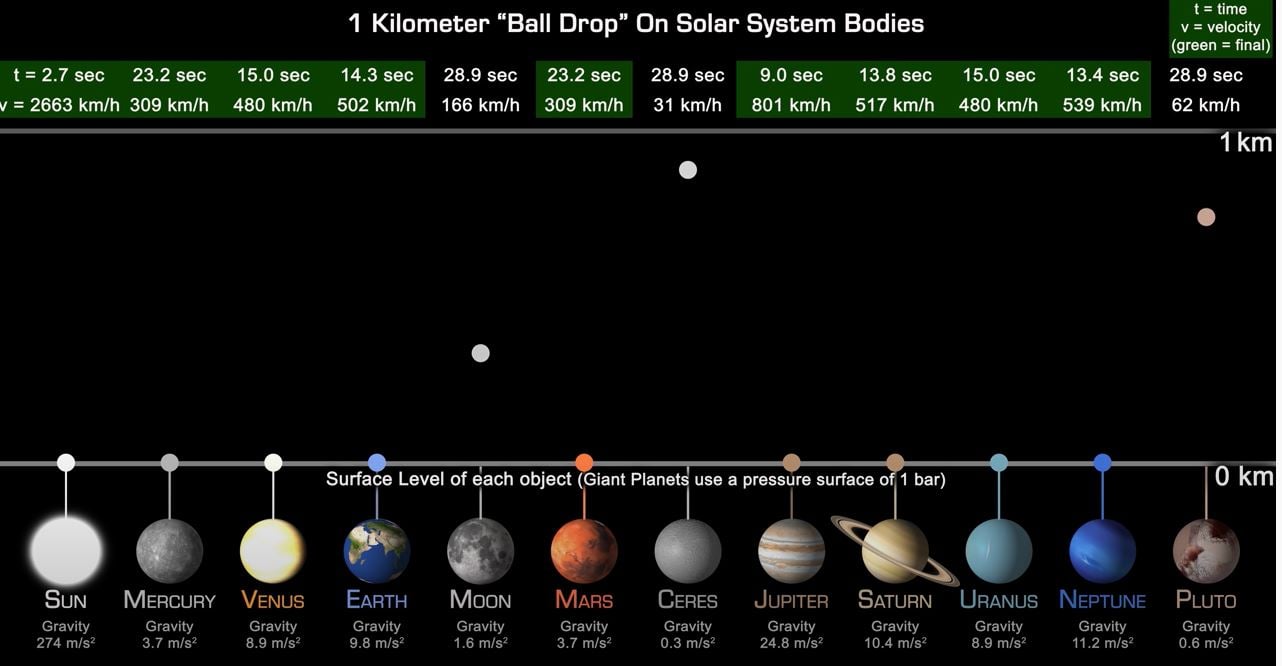Summertime means it's time to play ball! But what would it be like to play ball on various locations across our Solar System? Planetary scientist Dr. James O'Donoghue has put together a fun animation of how quickly an object falls on to the surfaces of places like the Sun, Earth, Ceres, Jupiter, the Moon, and Pluto.
The animation shows a ball dropping from 1 kilometer to the surface of each object, assuming no air resistance. You can compare, for example, that it takes 2.7 seconds for a ball to drop that distance on the Sun, while it takes 14.3 seconds Earth.
"This should give an idea for the pull you would feel on each object," O'Donoghue said.
But what about the pull of gravity on the big planets vs. Earth? Interestingly enough, it takes and 13.8 seconds for the ball to drop on Saturn, and 15 seconds on Uranus.
"It might be surprising to see large planets have a pull comparable to smaller ones at the surface," O’Donoghue said on Twitter. "For example Uranus pulls the ball down slower than at Earth! Why? Because the low average density of Uranus puts the surface far away from the majority of the mass. Similarly, Mars is nearly twice the mass of Mercury, but you can see the surface gravity is actually the same... this indicates that Mercury is much denser than Mars."
Ceres comes in at the pokiest place to play ball, with a ball dropping 1km in 84.3 seconds.
O'Donoghue, along with input from astronomer Rami Mando w, used a NASA planetary fact sheet for reference to create the video.
O'Donoghue also referenced one of the most famous gravity experiments ever conducted, the one by astronaut Dave Scott on the Moon:
?s=20Loading tweet...
— View on Twitter
O'Donoghue has a number of great videos on his YouTube channel, including a visualization of the velocities required to escape the pull of gravity from various bodies in the Solar System.
 Universe Today
Universe Today
